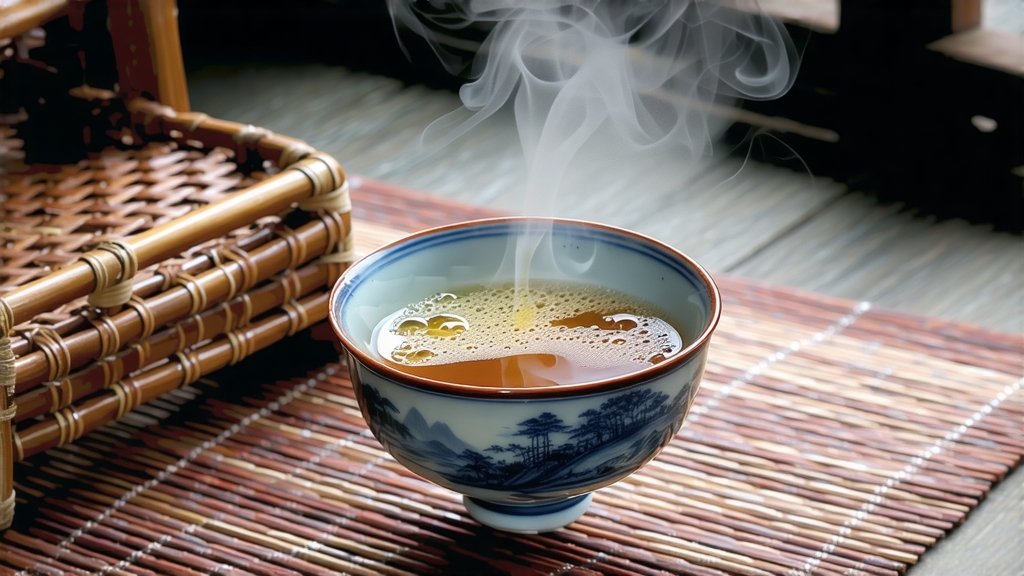
If green tea is the fresh-faced poet of Chinese camellia sinensis and pu-erh the bearded sage, then yellow tea occupies the quiet scholar who speaks only when the room has fallen silent. Among the sparse yellow tea family, Meng Ding Huang Ya—literally “Yellow Bud from Meng Summit”—is the most elusive, produced in such tiny lots that even in China only a few hundred kilograms reach the market each spring. Yet its story stretches back twelve centuries, to the moment when a Tang dynasty abbot on Meng Ding mountain first noticed that a slight delay in fixing the green leaf turned the buds the color of wet amber and the flavor from bright to buttery. By the Song era the tea was freighted on bamboo sedan chairs down the Min River to Chengdu, then by caravan to Chang’an, where court annals record it as one of the earliest “tribute teas” ever registered. Emperors prized it less for swagger than for subtlety: the liquor looked like late-afternoon sunlight caught in porcelain, and the taste suggested apricot skin, rain-wet slate, and a faint memory of vanilla that vanished before you could name it.
What makes Meng Ding Huang Ya a yellow tea rather than a green one is the almost invisible “men huang” step—sealed yellowing—inserted between killing-green and the first rolling. After the freshly picked single bud or bud-and-one-leaf is flash-wok roasted at 160 °C for four minutes, the leaf temperature is still 55 °C when it is immediately wrapped in thin linen and placed inside a bamboo chamber lined with wet cedar boards. There, under 85 % humidity and 38 °C, the leaf rests for 60–70 minutes, breathing its own residual heat. Enzymatic oxidation inches forward, chlorophyll quietly breaks down, and catechins dimerize into theaflavins that tint the leaf celadon at the edges and gold at the spine. Because the process is anaerobic, no grassy volatiles escape; instead, amino acids concentrate, giving later infusions a brothy umami reminiscent of gyokuro yet without Japan’s marine edge. After yellowing, the leaf is hand-rolled on rattan trays for eight minutes, then low-temperature dried at 65 °C until moisture drops to 5 %. The finished needle is slim, slightly curved, and downy at the tip; when shaken in a white porcelain gaiwan it emits a soft rustling compared by Sichuan farmers to “silkworms nibbling mulberry.”
The picking window is cruelly short: only the first eight days after Qingming when the bud is 15–20 mm long and still unfolded. One kilogram demands 42 000 buds, all plucked between 6 a.m. and 10 a.m. while mountain fog is still thick enough to scatter UV and keep the leaf cool. Experienced pickers use only thumb and middle finger, snapping the bud downward so the tiny stem breaks cleanly and the epidermis is not bruised. Any pressure that turns the cut edge brown will multiply during men huang, producing off-notes of stewed asparagus that no later firing can erase.
Western drinkers often brew yellow tea like green—two grams per 250 ml at 80 °C for three minutes—and then wonder why the cup tastes flat. The leaf is denser and the cell walls more intact; it needs coaxing. The classic Meng Ding approach is 4 g in a 120 ml gaiwan, water at 85 °C, flash-rinse to wake the buds, then successive steeps of 20 s, 25 s, 35 s, 50 s, 90 s, 3 min. The first infusion smells like warm chestnut and releases a pale jonquil liquor with a slippery texture that coats the tongue. By the third infusion the color deepens to old gold, the aroma shifts toward baked quince, and a cooling menthol note appears at the back of the throat. Because the leaf is high in theanine, the body feels a calm alertness rather than the caffeine spike of green tea; Chinese painters used to drink it while grinding ink, claiming it steadied the wrist for the finest horse-hair brush strokes.
To evaluate a sample, spread ten grams on a sheet of ivory paper and look for three yellows: the bud tip should be maize, the stem side butter, the down itself primrose. Rub three buds between your palms; the scent should open with snap